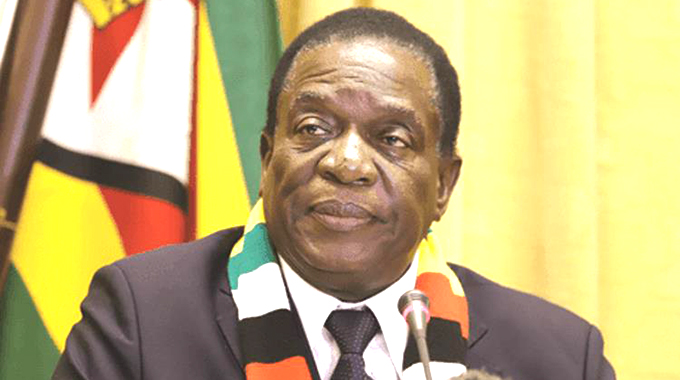Twenty years later, scars inflicted by stampede still to heal

Eddie Chikamhi
Senior Sports Reporter
IT seems like yesterday but today marks exactly 20 years after 13 football supporters lost their lives in a stampede at the National Sports Stadium.
The disaster unfolded during a 2002 World Cup qualifier between Zimbabwe and South Africa.
The scars, inflicted by the biggest sporting disaster in this country, have not yet healed.
The youngest victim, Dean Alec Fidesi, who was only six when he died in that stampede.
George Chin’anga, who was working in the finance department at Innscor Africa and was pursuing further studies, also died in that tragedy.
Eularia Made never lived to see her graduation day at the University of Zimbabwe.
She could have been 41 this year.
The other victims were Tawanda Gwanzura, Patrick Mpariwa, Killian Madondo, Sam Mavhuro, Enock Chimombe, Joyce Chimbamba, Benhilda Magadu, Ronald Kufakunesu, Tonderai Jeke and T. Makonese.
The football community have a tendency to forget but Dynamos, the team Fidesi supported, yesterday urged the nation to spare a thought for those who died in the tragedy.
“The 13 lives lost on the 9th of July 2000 at the National Sports Stadium in the wake of crowd melee shall, forever, be dearly and fondly missed by all members of the family of football in Zimbabwe,” said DeMbare chief executive officer Jonathan Mashingaidze in a statement.
“The tears may have dried since then but the memories of those precious souls lost on the day, remain etched on our hearts.
“The 13 candles, who had joined the other fans to rally behind the Warriors against Bafana Bafana on the fateful wintry Sunday, got blown away by the violent and chilly winds.
“Dynamos Football Club, as one of the clubs whose supporters form the core of the Warriors’ band of fans, would like to console and comfort the families of the thirteen Patriots who violently lost their lives while supporting their beloved Warriors.
“All clubs should spare a thought for the 13 as well as other fans we lost on the football front.
“We shall forever do whatever possible, as a club, to join the rest of the family of football in remembering fans who have lost their lives while on duty as the twelfth player.
“May their dear souls rest in eternal peace.”
The tragedy, which is the worst sporting disaster in Zimbabwe, struck towards the end of the 2002 FIFA World Cup qualifier between the Warriors and Bafana Bafana.
Police fired teargas into the crowded bays to quell disturbances after the visitors doubled their lead.
Fans, irked by the way some Bafana Bafana players appeared to mock them after Delron Buckley doubled side’s lead, rained missiles on to the pitch.
The response by the security officials was largely blamed for the catastrophe.
The stampede led to the abandonment of the game.
Apart from the 13 who died, scores were injured.
The National Sports Stadium has also been blamed for structural defects, which make it difficult for crowd control and management, especially in times of trouble.
The chairman of the ZIFA First Instance Body responsible for stadium inspections, Piraishe Mabhena, said such incidents should never be repeated again.
He said safety and security issues were among the reasons why the National Sports Stadium was banned by CAF and FIFA from hosting international matches.
“It’s unfortunate we have to refer to that sad incident again. But such things can be, should be, and must be avoided at all cost,’’ he said.
“Obviously, stadium safety is of paramount importance and is on the priority list of the renovations currently taking place at the National Sports Stadium and other football venues.
“As the inspection team, all inspections that we do take into account the security aspect.
“This is one of the reasons why CAF keep making noise about some stadia not being up to scratch.
“For example, our National Sports Stadium is such a beautiful facility but it’s those finer details that should be given special attention for it to be certified fit.
“CAF take safety and security issues seriously, that is why they have asked every member association to establish a safety and security office.”
Last year, the National Sports Stadium experienced another unfortunate stadium fatality when Egna Nyamadzawo was crushed to death in a stampede at the entrance before Zimbabwe’s final AFCON qualifier against Congo-Brazzaville.
National Stadium Safety and Security officer, Emmanuel Mutunami, who is also employed by CAF to lead stadium safety on the continent, yesterday said it was unfortunate that in 2000, the crowd control systems were bad.
“It’s unfortunate, that time, the systems used to control the crowds were not spot on,’’ he said.
“To avert similar disasters from happening again, in the future, we have adopted some ways of crowd management.
“In the past, the law enforcement agents used to be in charge of all the safety and security issues around the football stadium but things have changed.
“It used to be called crowd control but now it’s referred to as crowd management. It is now directly under the safety and security office established by CAF.
“Each member association must have this office. The officers receive high level training from CAF and FIFA in crowd management.’’
Last year, CAF held a workshop in Egypt where they unveiled their first Safety and Security Regulations to be followed by all the member associations.











Comments